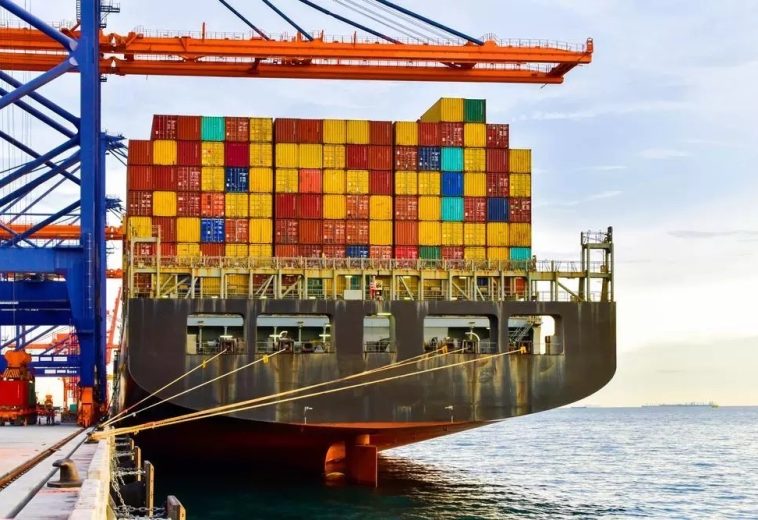Factors to Evaluate the Performance of Heads of Ports Authority
Assessing the performance of heads of port authority in Africa would require specific data and metrics, which may vary by country and organization. Generally, their performance can be evaluated based on factors such as; Cargo Throughout which is an increase in the volume of goods handled at the port and can indicate effective management; Efficiency that is to evaluates the time it takes to process shipments and reduce waiting times for vessels is another indicator. Also, Infrastructure Development Progress in infrastructure projects and upgrades to enhance port capacity as well as Revenue Generation for assessing financial performance and revenue generation for the port authority.
In addition, Safety and Security aimed at ensuring the safety of personnel, vessels, and cargo within the port area; environmental Sustainability which is implementing eco-friendly practices and reducing the port’s environmental impact; Trade Facilitationaimed at Improving trade facilitation measures to attract more business and finally Transparency and Governance for assessing the level of transparency, accountability, and adherence to regulations are indicators.
Performance of Heads of Ports Authority
To gauge the performance of specific heads of ports authority, you would need access to relevant data and performance indicators for their respective ports. Each port may have unique challenges and opportunities, making it essential to consider the context when evaluating performance. It is difficult however to get a uniform criterion in measuring the performance of the ports in Africa.
The performance of heads of port authorities in Africa can be evidenced by the KPI’s employed in assessing the general port performance over a given period. Some indicators may include depending on outlined goals or objectives ports operational performance, ports financial performance, ports quality service performance, and ports environmental and safety performance.
Operational performance indicator:
A port’s operational organization is a significant indicator of the heads of port authority’s performance levels in Africa. As ships grow in size to take advantage of economies of scale, shipping lines expect a corresponding effort from port authorities and terminal operators in handling the cargo they bring to the ports.
How long a ship remains in a port or how easily and quickly it leaves the port has been a critical indicator in the decision-making process of the shipping lines to use a particular port, especially in instances where there is competition among ports. Another operational indicator that determines the performance of port heads in Africa is labor utilization. In this case, the capacity of the port to manage idle time to its advantage, berth, and dwell time can be a key asset for the port. Resource utilization rate looks at the charge that is attached to the time spent on providing client service to improve port operations.
The volume of throughput achieved within a specific period through the crane moves, berth occupancy, and dwell time can be a good performance determinant of a port. An efficient port operation should be able to handle as much volume in the shortest possible time, use as few resources as possible, let cargo out of the terminal and berth as soon as possible and also keep investments as low as possible.
Financial performance indicator:
Port business is a very capital-intensive venture. Investing in both infra-and superstructures can be daunting. However, the provision of port services for a country like Ghana and the rest of other countries on the continent is almost impossible to ignore considering the interdependency of the world and the natural desire of all countries to engage in international trade in a way that increases economic gains for national development.
Port pricing differs substantially depending on the orientation or focus of the port. While private ports and terminals are set to maximize profits, public service ports per their institutional philosophy aim at providing affordable and less financially invasive pricing structures for the benefit of the taxpayers. However, not the case in Ghana and some few other countries where the cost of port services is very high, which makes port service completely unbearable to most Ghanaians.
Quality service performance indicator:
The port industry, like all business-related industries, rely substantially on its client base for business continuity. Therefore, the provision of quality service to the satisfaction of these clients is very critical. There are several propositions from both academia and industry experts in explaining what constitutes quality service.
Customers do not appreciate delays because delays have ripple effects on their business plans. Given this, it is safe to propound that for a port to be able to enjoy a high level of performance, service provision to its clients can be one of its key determining factors.
Environment and safety indicator:
Increasingly, a port’s performance level is critically determined by its commitment to both environmental and security considerations. The quality of security architecture instituted by port heads in Africa also determines where the port’s performance level is at.
The implementation of maritime protocols is to be strictly adhered to by ports because all these allow for safe and efficient port operations and therefore the lack of these protocols and other relevant regulations make the port less efficient. Weak port security enforcement is tantamount to an unimpressive port performance.
Top 10 ports in Sub-Saharan Africa by World Bank
The top 10 ports in Sub-Saharan Africa in terms of efficiency, as ranked by World Bank rankings, show their influence on local and global trade.
Djibouti
With the fastest container handling times in Sub-Saharan Africa, Djibouti is acknowledged as having the region’s most effective port. Due to its advantageous location, it serves as a hub for the Red Sea, Indian Ocean, Europe, Africa, and Asia.
Berbera
The port of Berbera in Somaliland has quickly developed into a comprehensive maritime and logistical hub in the Horn of Africa, specializing in boosting the economies of Somaliland and surrounding areas.
Conakry
The Port of Conakry, which serves as Guinea’s largest port, is an important economic hub known for its effectiveness and substantial contributions to trade in West Africa.
Matadi
Matadi, which is in the Democratic Republic of the Congo, is a major maritime port that facilitates significant cargo traffic and is important for local trade.
Tema
The largest port in Ghana, Tema supports a significant amount of Ghana’s trade, demonstrating effectiveness and strategic importance.
Mogadishu
The Port of Mogadishu is a significant East African port that aims to strengthen operational systems and economic flows, making it an important asset for Somalia.
Beira
The port of Beira in Mozambique is an essential shipping and logistical hub that provides access to numerous African countries and is crucial to trade in the area.
Freetown
The port of Freetown in Sierra Leone serves as a vital entrance point for trade and business, highlighting the necessity to maximize effectiveness in a constrained space.
Toamasina
Madagascar’s Port of Toamasina is a highly effective and modern container terminal that greatly boosts the country’s commerce activities.
Takoradi
Ghana’s Port of Takoradi serves as a strategic logistics support base for the offshore exploration and production of oil and gas, emphasizing the port’s significant contribution to the national economy.
The general port performance of the various heads of authority in Africa is seen to keep growing as far as port services are concerned. The advancement of technology means port operations and the kinds of service expected to be delivered to port users will keep changing. This is classically evidenced in the introduction of the paperless system in Ghana.
The likes of “Bombay” are a typical example of the changing phase of the port service delivery phenomenon. This tool was developed by DP World and SMS group to revolutionize the container storage system where it can place each container in an individual rack thereby moving each one easily compared to the current industry standard. This means there will always be different variables to be considered for measuring the performance of the head of port authorities depending on the goals and KPIs of the port concerned.


